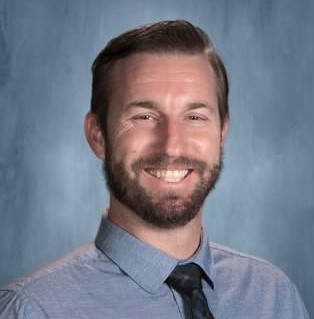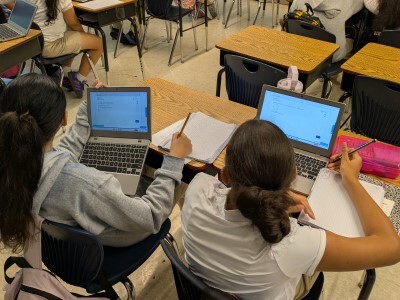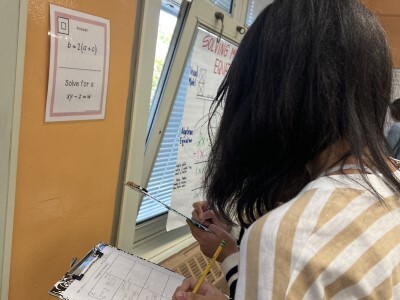The Power of Personalized Learning in Math Education
Topics

We’ve all had the experience of truly purposeful, authentic learning and know how valuable it is. Educators are taking the best of what we know about learning, student support, effective instruction, and interpersonal skill-building to completely reimagine schools so that students experience that kind of purposeful learning all day, every day.
To personalize learning in math, students reflect on their performance and understanding, teachers make math relevant and accessible, and both are changing mindsets on what the subject is all about.
Students have a voice in their learning.
Students co-create learning opportunities with their teachers.
Students work with peers to co-construct learning and understanding.
Students create their own self-directed, personalized pathways.
To give students the opportunity to do all of these things, the faculty and staff at Mission Vista High School (MVHS) in Vista Unified School District are transforming our classrooms and personalizing learning.
How are we getting there? MVHS embraced our district’s commitment to inclusive change practices, fostering a culture of innovation, and having teachers start where they are. Teachers were empowered to determine how—and how deeply—to engage with personal learning (PL), from “dipping their toes in” with incremental changes to an individual lesson or two to “cannon-ball” jumping in, implementing PL in more sustained and significant ways.
Colleagues invariably point to math teacher and department chair, Stacy Eyton, as the premier PL “cannon-baller” at our school.
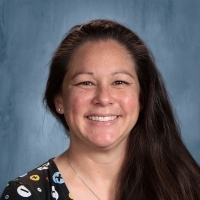
Stacy Eyton
Nicole Allard, who was the principal of MVHS before me and now is the district’s executive director of educational excellence and innovation, often tells the story of how Stacy dove into the deep end of the PL Challenge. Instead of meeting the school-wide goal by revising a lesson or unit, Stacy came to Nicole’s office and simply announced that she was going to redesign and test a completely new way of grading, one that relied more on feedback and reflection than on numerical scores.
Stacy explains that instead of assigning points to tasks and having a computer calculate an average, she began incorporating extensive written and verbal feedback, learner self-assessment, and regular student-teacher conferences: “Students don’t just see points adding up, like, ‘I got 3 out of 10.’ Even if they get a problem wrong, they and I can see exactly where they are having trouble.” Providing feedback rather than a numerical score, she argues, “deters students from playing the grading game,” supporting them to focus on learning and improvement.
- Learn More: Read about Stacy’s standards-based grading practices in Measuring What Matters: Learner-Centered Assessment, a publication we created with NGLC.
For Stacy and her colleagues, learner reflection is a key part of the PL approach to learning math. For example, after students complete an assessment, they “reflect on the mistakes they made. Is this a huge mistake like you’re not calculating correctly, or is it a minor mathematical mistake but they have the right idea? Reflection helps them realize where they are and helps us realize how we can help and how we can move past this barrier.”
Like many educators at MVHS, math teachers have developed student-friendly versions of essential math skills and concepts, like graphing a line or writing equations of a line. In addition to reflecting on their performance on individual tasks, learners are invited to reflect more broadly on their level of understanding of these key concepts. According to Stacy, she and her fellow math teachers “try to get [students] to reflect on individual concepts to see how we can push them forward, what we can do as well as what they can do,” whether it’s a learner signaling that they are ready to move on or telling the teacher, “I’m a deer in the headlights. Help me out!” In Stacy’s experience, “students are very strong at self-assessing.”
- Learn More: See the student-facing skills and standards lists for our Financial Algebra and Integrated Math 2 courses
Although Stacy indicates that COVID-19 and the resulting learning loss have required them to scale back on some interest-based extension projects, she and the other math teachers are still committed to key PL principles. “We want students to take ownership of math and find areas that are of interest to them—how they can apply it to what they are interested in and extend [math] into that versus ‘Here’s what you need to know. Let me just give it to you.’”
Another approach to making math relevant and accessible to all learners involves changing mindsets about what the subject is all about. “Math is not just ‘solve for x.’ It is about problem-solving and tackling challenges,” Stacy explains, citing broadly applicable skills like reasoning, investigating patterns, and communicating with precision that can be developed in a math course.
“Our department goal,” she observes, “states that ‘math is a journey to navigate with GPS—grit, perseverance, and self-motivation.’ Yes, we are doing math together, but what we are learning about is not giving up.” Given the challenges posed by the pandemic, these are inspirational words for adults and learners alike.
Multiple Pathways in the MVHS Math Course Sequence
In tandem with the personalized learning provided in classroom instruction and assessment, the math program at MVHS offers learners multiple pathways through the math curriculum. In addition to the traditional route to AP-level courses—what Stacy calls “the road to calculus”—learners can take alternative pathways based on their interests and goals. For example, Stacy points to financial algebra, an applied mathematics course that focuses on personal finance, and discrete math, which includes topics like game theory that “kids have a lot of fun with.” If learners take data science in their junior year, they can choose AP statistics as seniors. In this way, Stacy says, “they can still take a rigorous AP class without having to take pre-calculus.”
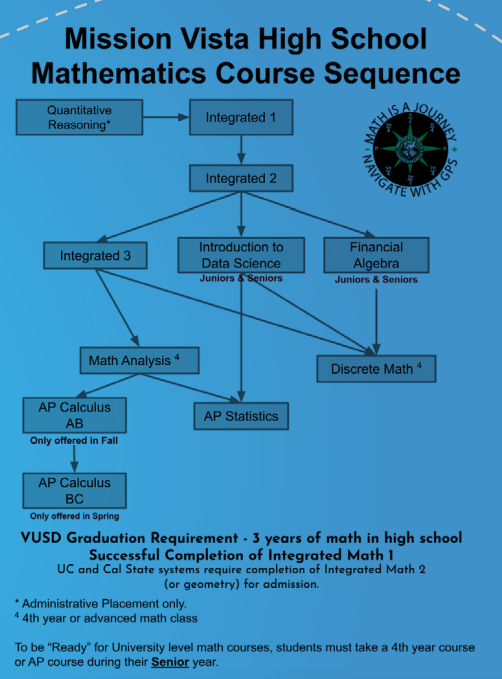
Related Posts
Supporting Students to Drive Their Learning in ELA - MVHS English department chair Michelle Daum explains her approach to personal learning: moving students toward independence and ownership of their learning, so they are prepared for their futures.
Personalized Learning in Social Science: Skills, Agency, and Relevance - Robert Chodola describes how personalized learning looks different in history compared to the high school electives he teaches at MVHS, but the goals are the same.
Personalized Learning in Photography: Discovery, Innovation, and Growth - Personalized learning in a photography course comes through unique, individual work products, but MVHS teacher Will Salley pushes for even more student ownership of the learning.
This article is an excerpt from the NGLC publication, Personal Learning at Mission Vista High School.
Photo at top of a Vista Unified School District student, courtesy of NGLC.

